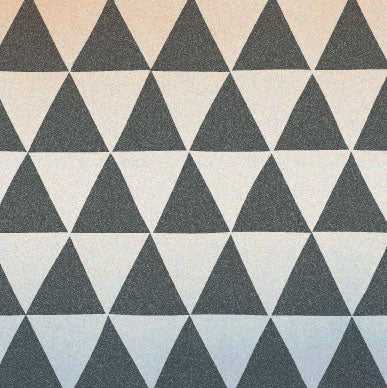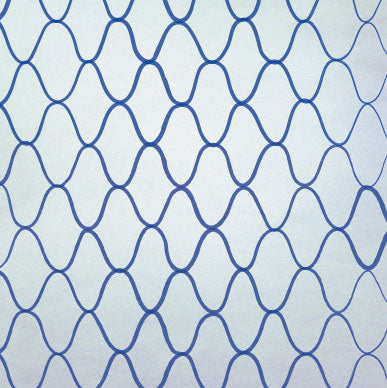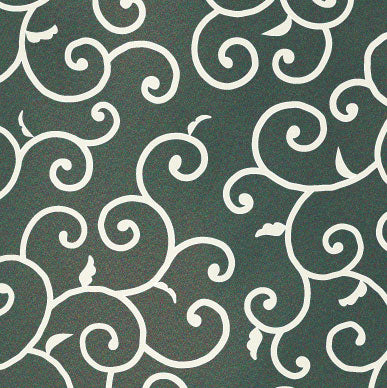The Hidden meaning of
KIMONO PATTERNS

Named after the hemp leaf due to its resemblance in shape, this pattern has been used to wish for vitality and the healthy development of children due to its rapid growth rate.
Additionally, hemp has traditionally been seen as a sacred plant that can be a protection from harm or evil spirits since no insects live on it. This pattern is also often used on amulets.

The arrow feather symbolizes the pursuit of a goal and is considered an auspicious pattern in Japanese tradition. The straight trajectory of an arrow, which does not return to the archer once fired, is associated with forward motion and progress. In the Edo period (1603–1868), brides were given kimonos adorned with arrow feathers as a good luck charm, symbolizing the idea that they would not need to return to their original family home.

"Kanoko-shibori" is a classic Japanese tie-dyeing technique that creates unique embossed patterns on garments. This intricate process takes time and dedication as each spot must be individually crafted by hand. The name "kanoko" refers to the pattern's resemblance of spots on young deer.

The "scale pattern," also referred to as the "replacement pattern," features alternating triangles and resembles the scales of fish and snakes. It symbolizes molting, removing bad luck and regeneration and was believed to be a powerful symbol to ward off evil spirits in the Edo period.
The combination of three triangles, referred to as "three scales," is particularly famous as the "Hojo" family crest in the era of "Kamakurabakufu" (1192-1333).

The hexagonal shape, inspired by the turtle shell pattern, is considered a lucky symbol of longevity in Japan. This shape is known for its stability, as seen in beehives and turtle shells, and is associated with protection from external forces. It embodies the qualities of stability, protection, strength, and fortitude.
The simple tessellation of hexagons creates a wide range of variations, including the "Kikko Hanabishi", where the center of the hexagons forms flowers, the "Komochi Kikko", with two layers, and the "Bishamon Kikko", formed by joining three hexagons together.

The shark skin pattern is a continuous arrangement of small dots that overlap in an arc-like formation. Named for its resemblance to shark skin, it appears simple at a distance, but when dyed on glossy fabric, it sparkles and sways gracefully.

The undulating waves represent the ebb and flow of life, evoking a sense of serenity and tranquility. It symbolizes the continuity of life, and serves as a reminder of the importance of finding peace and tranquility in the midst of life's ups and downs, for long-lasting happiness and a peaceful life. This design, with its powerful message of eternal peace, makes an ideal wedding gift as the couple embark on their journey together.

This design captures the essence of the fishing net's fluid movement, creating an elegant and captivating pattern. It was commonly found on kimonos, hand towels, and ceramics.
In the late Edo period, the pattern was often used to depict fish, shrimp, and octopus, as well as other sea creatures, arranged in a realistic mesh pattern, reflecting the lives of fishermen and fish market workers.

This pattern resembles a bamboo basket weave. It is based on the star-shaped design, made of stacked equilateral triangles. It is believed to have the power to ward off evil spirits. In the past, bamboo baskets were placed at the entrance as a talisman to repel evil spirits.

The checkered pattern symbolizes prosperity, with its uninterrupted flow representing continued wealth, success and growth for future generations and businesses.
Once referred to as "stone road," it gained widespread popularity during the mid-Edo period. Kabuki actor Ichimatsu Sanogawa's white and navy checkered hakama played a significant role in its popularity among fashion-forward women, leading to its current name "Ichimatsu".
This pattern was also selected as the emblem of the 2020 Tokyo Olympics.

Featuring endlessly linked circles, this pattern is considered a symbol of harmony and good luck. It also represents the idea that human relationships and connections are as valuable as precious items.
The term "shippo" is a Buddhist word that refers to the seven treasures, including gold, silver, lapis lazuli, glass, coral, agate, and giant clams (used for making prayer beads).

The "Hishi" pattern, derived from the leaves and fruits of a waterside plant, is primarily associated with strong fertility. This plant symbolizes the prosperity of descendants and good health.
Variations include the layered "irikobishi", the diamond-shaped "hanabishi" made of flowers, and the 4-flower combination "waribishi".

The pattern depicts the fluid movement of water through its intricate, curved lines. It captures the fleeting nature of water and is often used in combination with other patterns.
The running water pattern symbolizes "washing away hardships and misfortunes" and "flowing water is always pure without becoming muddy." Among the flowing water patterns, "Kanzesui" is shaped like a whirlpool.

The Tachiwaku pattern is characterized by its depiction of rising water vapor in the form of two intersecting curves. The pattern is composed of regular, vertical wavy lines that create a sense of movement and continuity.
Often, additional elements such as clouds, flowers, and waves are incorporated into the design. The pattern is said to symbolize the rising of steam, shimmering heat haze, or ascending clouds, and is considered to be auspicious due to its upward movement.

This design captures the elusive essence of haze or fog with its interconnected pattern of horizontal lines. Reflecting the ever-changing nature of water, this design holds a sacred and auspicious meaning just like clouds, which were believed to bring good luck and prosperity.
The haze, which is characterized by its resemblance to the ancient letter "ヱ" is often used in traditional Japanese art, and is often filled with auspicious patterns.

This pattern features free-flowing vines, symbolizing vitality, prosperity, and the longevity of a family. The vines growing in all directions, entwining with each other, represents the interconnectedness and strength of the family.
Variations such as "nindou arabesque," "grape arabesque," "peony arabesque," and "lotus arabesque" can be created by incorporating flowers, leaves, and fruits into the design.
In Japan, this pattern has a strong association with thieves, however, during the Meiji era (1868-1912) it became a popular household item and commonly found in every home in the form of "furoshiki" wrapping cloths.
